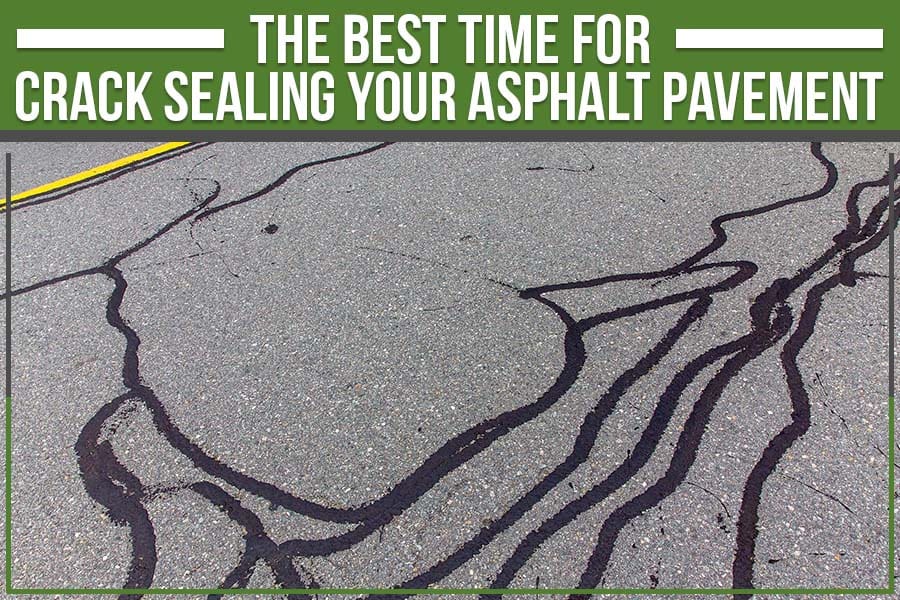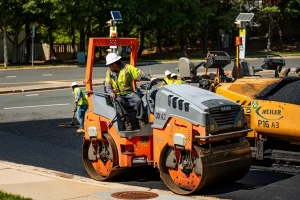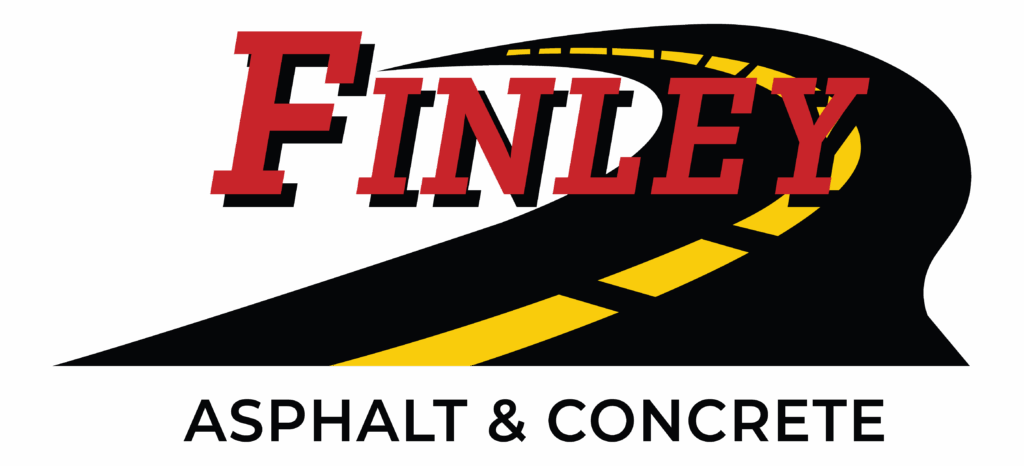- Updated June 26, 2025
Key Takeaways:
- Cracks in asphalt pavement are often caused by heavy traffic, poor design, and lack of routine maintenance.
- Unsealed cracks allow water to seep in, triggering freeze-thaw cycles that weaken the pavement’s structure and appearance.
- Left untreated, cracks can lead to serious issues like alligator cracking, potholes, and foundation subsidence.
- Cracked asphalt not only looks unappealing but also loses strength and longevity over time.
- The best time to schedule crack sealing is in the spring or fall, when temperatures are ideal for long-lasting results.
- Avoid sealing during extreme weather—cold winters and hot summers can affect material performance and curing.
- For durable, professional results, trust Brothers Paving & Concrete, your local experts in asphalt crack sealing and pavement maintenance. Contact us today for a free quote!
Cracks in asphalt pavement, no matter how small or big, are unsightly and pose a risk to drivers and pedestrians alike. It is best to resolve the issue quickly before further deterioration occurs. That is also a significant reason why asphalt maintenance is a routine to be reckoned with.
Brothers Paving & Concrete are expert paving contractors, offering top-notch services in all things related to asphalt, from installation and repair to crack sealing. But let’s begin with the deal behind caring for paved asphalt surfaces.
Why Routine Asphalt Maintenance Matters
Asphalt maintenance is essential because it helps extend the pavement’s lifespan, improves its appearance, and enhances its safety and functionality. Regular maintenance activities such as filling cracks, patching potholes, and resealing surfaces can prevent damage from spreading and costly repairs in the future.
It also helps maintain the integrity of the pavement and prevents water and other elements from penetrating and causing further damage. Overall, asphalt maintenance helps ensure that the pavement continues to perform optimally and provides a safe and smooth driving surface.
Maintenance begins with inspecting your pavement for signs of damage, especially cracks, as they indicate stages of pavement failure. You might have to consider a few more factors, but we have listed a few for you below.
Top Signs Your Asphalt Needs Crack Sealing
1. Cracks
Visible cracks on the asphalt surface clearly indicate that it’s time for a crack seal.
2. Aging
Over time, asphalt naturally deteriorates and cracks. If your pavement is more than 20 years old, it’s likely to need sealing.
3. Potholes
They can form when water seeps into cracks in the asphalt and freezes, causing the surrounding material to expand and create a hole.
4. Raveling
This is when the aggregate (small rocks) in the asphalt surface becomes loose and starts to break apart, creating a rough and uneven surface.
5. Alligator cracking
This is a pattern of cracks that resemble an alligator’s skin, and it’s a sign that the underlying structure of the asphalt is failing.
6. Deformation
If the surface of your pavement is sagging or deforming, it’s a sign that the base layers have become unstable and need to be repaired.
Crack sealing is important to prevent further damage and extend the life of your asphalt pavement.

When Is the Best Time to Seal Cracks in Asphalt?
Timing is one of the most important factors in a successful asphalt crack sealing project. Even with the best materials and a skilled contractor, applying crack sealant at the wrong time of year can lead to poor adhesion, ineffective results, and premature failure.
The ideal time to seal asphalt cracks is during the spring or fall, when outdoor temperatures are mild—typically between 40°F and 85°F. This range ensures the crack filler can properly adhere to the pavement surface and cure as intended.
Why spring and fall are the best seasons for crack sealing:
- Mild temperatures help the sealer bond and cure properly.
- Lower risk of rain or snow interfering with application.
- Asphalt naturally expands and contracts less, making cracks more stable for treatment.
- Prevents water intrusion ahead of winter freeze-thaw cycles.
Avoid sealing in extreme temperatures:
- Summer: High heat can cause the material to dry too fast, resulting in cracking or poor adhesion.
- Winter: Cold temps can prevent proper bonding and may freeze the material before it sets.
Scheduling your crack sealing project in spring or fall helps maximize the effectiveness and longevity of the repair—ultimately protecting your pavement investment.
Key Benefits of Asphalt Crack Sealing
1. Prevents further damage
Cracks in asphalt pavement can allow water and other elements to penetrate the surface, causing further damage to the underlying structure and eventually leading to potholes and other serious problems.
2. Extends the pavement’s life
By sealing cracks, you can prevent water and other elements from penetrating the surface and causing damage, which can extend the life of the pavement.
3. Improves safety
Cracks and other imperfections in the asphalt’s surface can be dangerous for drivers, cyclists, and pedestrians, as they can cause vehicles to lose traction or trip hazards for people walking on the pavement.
4. Maintains appearance
A well-maintained asphalt pavement with no visible cracks or other imperfections can enhance the appearance of a property and add to its value.
5. Reduces maintenance costs
Regular maintenance, including crack sealing, can help prevent more severe and costly repairs. By sealing cracks promptly, you can reduce the need for more extensive repairs or even a full paving job.
How Unsealed Cracks Lead to Serious Pavement Damage
Many people are surprised to learn that water is one of the most dangerous enemies of asphalt pavement. Water can enter through open cracks, whether the source is rain, melting ice, or snow. It then seeps into the various layers that make up the pavement foundation, subgrade, and aggregates – and then the freeze-thaw process starts. Repeated cycles can result in further active cracks, alligatoring, and potholes. Moisture-affected soils can also result in gradual pavement subsidence, leading to punchouts.
Can You Crack Seal Asphalt in Cold Weather?
Crack sealing during the winter is possible—but it’s far from ideal. Cold temperatures and winter weather can significantly reduce the effectiveness of crack sealant.
Here’s why winter crack sealing can be problematic:
- Low temperatures can cause the crack filler to freeze before it bonds properly.
- Snow, ice, and moisture can prevent proper adhesion and slow down curing.
- The sealant may not penetrate deeply into the crack, leading to premature failure.
If winter sealing is unavoidable, take extra precautions:
- Use specialized cold-weather crack sealants designed for low-temperature application.
- Warm the pavement surface with a hot air lance or heat gun to at least 40°F before sealing.
- Monitor weather conditions closely to avoid sealing during snow, rain, or freezing temperatures.
While emergency repairs can be done in winter, the best time to seal asphalt cracks is in spring or fall, when temperatures are more consistent and the risk of precipitation is lower. For the best results, hire an experienced asphalt contractor who understands how to adjust for seasonal challenges and ensure a long-lasting repair.
Schedule Your Crack Sealing Service in the D.C. Metro Area Today
If you’re in the market for a crack sealing job on your asphalt pavement, consider availing the services of the expert paving contractors Brothers Paving & Concrete, serving DC, Maryland & Virginia. Our services include crack sealing, asphalt paving, installation, and repair. We use premium DOT-certified materials and offer round-the-clock customer support.




